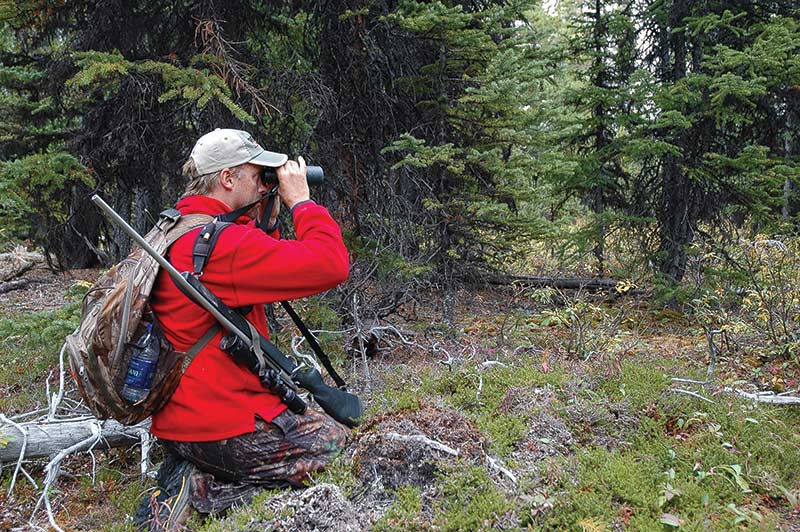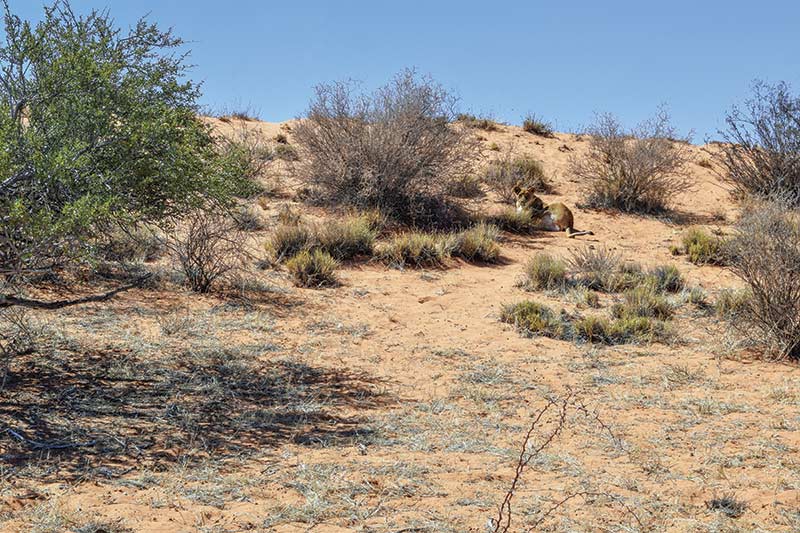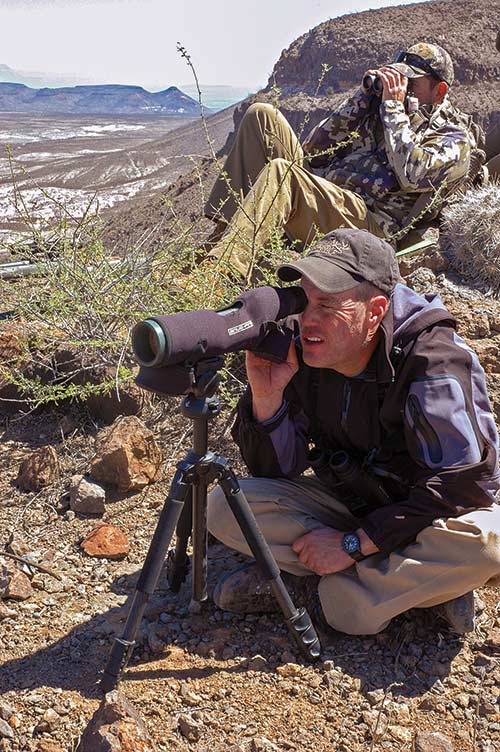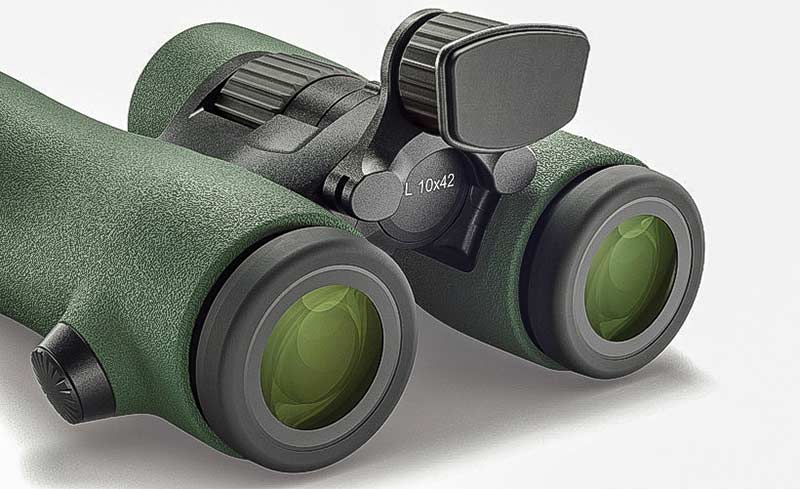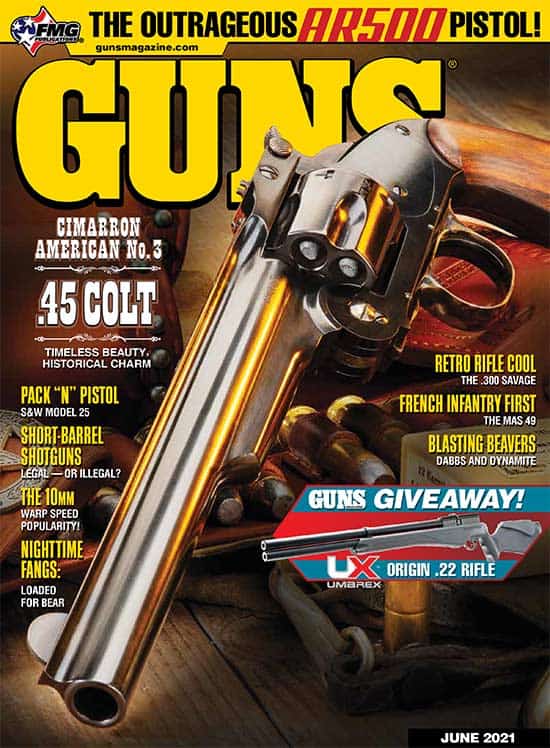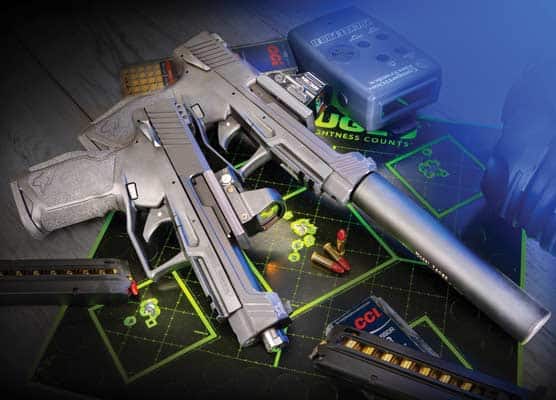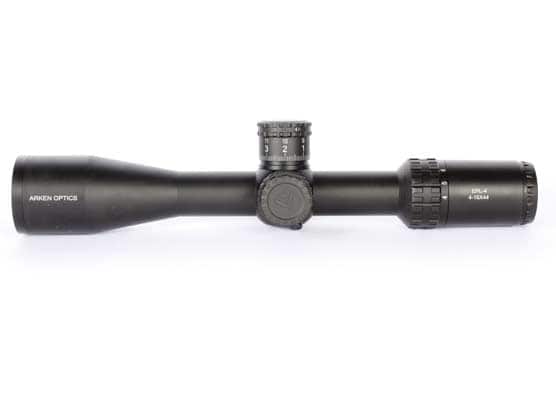No Motion Pictures!
Still life is always best
The bull had dropped right away. The sharp image of crosswire on rib had yielded to the brief but violent blur of recoil. I’d cycled the bolt fast. A moment’s hiatus. The Kimber was still again, braced against an ancient fir. Through the scope, the lattice of snow-caked alders and conifers was suddenly fired by sun-piercing cloud and fog.
Searching
A postcard image, this snowscape was also absent landmarks. I’d taken care to register in my mind’s eye the elk’s position, but no distinctive feature brought me back to it. Keen to ensure the beast was not wounded and scrambling off, I’d scanned the second-growth. Acres of it sprawled on a slope hemmed by old-growth forest. Now … just where had the bull stood?
Take a deep breath. Look where the barrel points. Keep your eyes still. It was then I caught the slight shiver of a young pine. A minute later it shook again. I waited, watched, then threaded my way through the bush 80-odd yards to the tree. The bull lay there, dying — he’d kicked the pine reflexively.
You can’t see movement well if you’re moving. An animal — squirrel, rabbit, deer, elk — stands as still as a stone to confirm a possible threat. That’s why essentially color-blind creatures get the best of hunters who aren’t.
Binos
A binocular is useful only if you recognize what it shows you. Panning across a hillside, you’re unlikely to see a Stone’s ram partly hidden by a rock. A glance through a bino held shakily with one hand won’t alert you to a buck in a mahogany thicket across the canyon. Movement is as much a handicap as streams of water or a spattering of snow on the objective lenses. Any distortion makes an image harder to dissect. Instead of arresting your eyes, the ram’s horn, the buck’s nose become part of the background.
No, it’s not rocket science. Hold the binocular still with both hands. Refine the focus. Read what the glass shows you as you might read a page of a book, moving your eyes only enough to cover the field of view. Shift to an adjacent patch of mountain or cover, steady the glass, again read what you see. Pause long enough when still-hunting or climbing to let your pulse subside. Bracing your elbows helps you see more clearly. Swarovski has introduced a brow rest to help you support its newest NL Pure binocular. It adds a third point of body contact and does trim shake from the image.
Ramping It Up
While you need magnification to look far, adding power increases the visible motion in your field of view. At modest distances you may identify more detail with an 8x binocular than with a 10x of like quality. For years I hunted with a 7×35 B&L Zephyr. Its light weight and modest size complemented a generous 5mm exit pupil (think — bright image) and power enough for glassing up pronghorns and bighorn sheep. I found it easy to hold.
These days, 6x and 7x Porro models have been supplanted by 8x and 10x roof-prism binoculars. Optically, they’re superior. With 32mm and 42mm objectives, they’re also heavier than my old Zephyrs. The added magnification pairs wells with the trend to looking more and walking less on hunts, and shooting at long range. But these binos aren’t any steadier in my hands. The heaviest can be a burden on the trail and tiring to hold without support.
Compact spotting scopes with magnification as low as 12x are designed to ride in a daypack and use without a tripod in a pinch. But when modest power suffices, a binocular trumps a spotting scope. It’s much easier to hold. Also, using both eyes, you have better depth perception, a broader field and less eye fatigue. Like image motion, squinting tires your eyes and limits effective time in any optic.
Spotting Sscopes
Tripod-mounted spotters with 65mm to 85mm objectives and 20x to 45x magnification stretch your vision beyond the reach of a binocular but can wear you out during long glassing sessions.
Carbon fiber (CF) tripods are light, offer great stability and add cost. Three of the best CF models I’ve used are from Vortex and Meopta, makers also of fine spotting scopes. Meopta’s collapses to 18″ and its quick-attach base and ball head accepts an adapter so you can take photos with your smartphone. Extended, it lifts your scope 70″, so you can glass standing. Vortex’s new 7½ lb. Radian reaches 67″ and will support 55 lbs. — think, rifles — on its ball head.
A squeeze-grip, ball-in-socket head is a snap to use and you can lock it instantly anywhere within its wide range of movement. But lighter, more compact, less costly heads may serve as well. Given the durability, versatility and prices of CF tripods, and the myriad head options, you’re smart to think of all a tripod might do for you, and visit your top pick in the flesh, for a test-run of the controls one-handed.
Lock And Rock
Riflescopes are only as still as the rifle. Bipod, sling or shooting sticks, limb, rock or CF tripod can rein in the wobbles. They won’t negate the effect of a flinch or horsed trigger, or ensure against the unexpected. Twice I’ve braced my rifle against the trunk of a big tree only to have bark slip as the trigger broke. Bipod feet can slide; tripod legs can suddenly telescope. A sling can creep over your triceps. Body position is still the most controlling element of a shot — as low as practical, and balanced of its own accord over Mother Earth, your torso is best equipped to keep motion to a minimum. Artificial support bears a rifle’s mass more ably than it bears yours.
Through the lenses of the binocular, spotting scope and riflescope, you’ll see many motion pictures. These are worthless images. In optics, a still image offers your best chance to spot game and kill it.
